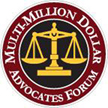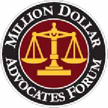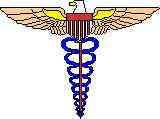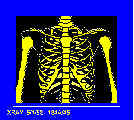Hawaii Medical Malpractice & Professional Negligence - Lawyer - Attorney Hawaii

|

|

|

|
Professional Negligence - Hawaii Med Mal Lawyer
Attorneys Bill Lawson & Amy Woodward |
Medical Malpractice - HawaiiProfessional Negligence
Deadlines to File Professional Negligence / Medical Malpractice Claims in Hawaii
The deadline for filing most professional negligence / medical
malpractice claims in court in Hawaii is two (2)
years from
Contact Accident Lawyer Hawaii now for a free evaluation of your case.
Medical Malpractice & Professional Negligence Claim Information
Generally a medical malpractice claim arises where a medical
Examples of Professional Negligence / Medical Malpractice Claims Some examples of potential medical malpractice claims are:
Researching a Medical professional American Board of Medical Specialties. The AMBS listing of most medical specialty boards- click on "Who's certified?" Medical Board of California- Physician License Information. California provides the ability to research disciplinary information about physicians licensed in California.
For medical professionals in the state of Hawaii, you may also find
the information in the InjuryLawyerHawaii website to be helpful-
Select Hawaii Court Opinions on Professional Negligence and Medical Malpractice GARCIA v. KAISER FOUNDATION HOSPITALS, JUNE 9, 1999 The Hawaii Supreme Court holds (1) that an employee's claims against a health care plan provided by his employer (Kaiser) for failure/refusal to provide timely treatment for hip necrosis and a herniated disk are are preempted by the Employee Retirement Income Security Act (ERISA) and (2) that such claims against health care providers must go through the Medical Claims Conciliation Panel (MCCP) under HRS section 671-12 (1993) prior to the filing of the complaint or they are subject to dismissal. AGA v. HUNDAHL, MARCH 24, 1995. The Hawaii Supreme Court holds that privileged peer review committee documents may become discoverable if they are relied upon by a medical expert in forming his opinions (for the defense of a medical malpractice action)- but that in order to preserve such an objection the party seeking discovery must move for an in camera inspection of the same by the trial court prior to trial. BLAIR v. ING, SEPTEMBER 10, 2001 The Hawaii Supreme Court holds that (1) there is no requirement that a judgment be a ruling "on the merits of the claim" as opposed to a dismissal in order for a party to be a "prevailing party" for purposes of attorney's fees [overruling Yoshida v. Nobriga, 39 Haw. 254 (1952); Schubert v. Saluni, 9 Haw. App. 591, 855 P.2d 858 (1993); Shanghai Investment Co. v. Alteka Co., Ltd., 92 Hawai`i 482, 993 P.2d 516 (2000) and others] and (2) awards $23,008.83 in attorney's fees and costs to a defendant in an accounting malpractice case dismissed on motion. PIEDVACHE v. KNABUSCH, AUGUST 27, 1998 The Hawaii Supreme Court holds that the limit for attorney's fees in a state District Court action in 'the nature of assumpsit" (failure to comply with post-closing real estate covenants) is 25% of the jurisdictional limit of $20,000 - hence $5,000.00. (apparently would apply by analogy to real estate agent "malpractice")
Standards of Care for Nurses
In addition to the responsibility of accurately following medical instructions which have been given, at times nurses also have an affirmative duty to intervene and to clarify or to correct inconsistencies in those instructions. Examples of clinical situations in which a nurse has a duty to intervene include:
|
|
Accident Lawyer Hawaii
Law Offices of William H. Lawson
New client hotline:
Pearl City, Aiea and Waipahu:
Main business phone: Products Liability - Cases & Comment Jones Act- maritime law and seaman cases The Constitution Of The State Of Hawaii Recent Personal Injury and Car Accident News
|
|
Awards and Honors  Martindale Hubbell - AV rated lawyer - Best Rating Possible
Martindale Hubbell - AV rated lawyer - Best Rating Possible
 Multi-Million Dollar Advocates Forum
Multi-Million Dollar Advocates Forum
 AVVO Top Rated Personal Injury Attorney, 10 of 10
AVVO Top Rated Personal Injury Attorney, 10 of 10
 ATLA Top 100
ATLA Top 100
 Lawyers.com - Rated 5.0 out of 5.0 - Top Rating Possible
Lawyers.com - Rated 5.0 out of 5.0 - Top Rating Possible
 National Trial Lawyers - Top 100 Trial Lawyers
National Trial Lawyers - Top 100 Trial Lawyers
 Million Dollar Advocates Forum
Million Dollar Advocates Forum
 American Society of Legal Advocates - Top 100 - 2017
American Society of Legal Advocates - Top 100 - 2017
 Marquis' Who's Who in the World, Who's Who in America and Who's Who in American Law
Marquis' Who's Who in the World, Who's Who in America and Who's Who in American Law
 AVVO Clients' Choice Personal Injury Lawyer
AVVO Clients' Choice Personal Injury Lawyer
 Expertise - Best Car Accident Lawyers in Honolulu 2019
Expertise - Best Car Accident Lawyers in Honolulu 2019
 Best Attorneys in America - Life Charter Member
Best Attorneys in America - Life Charter Member
|
|
Click on a box below to choose one of our 4 menus:
There is NO CHARGE for sending your case information to our law firm. The information provided on this website is preliminary and informational ONLY. It is not legal advice. The use of our webpages does not establish an attorney-client relationship. This website is copyright 1999-2020 and the contents of this website are the property of Personal Injury Attorney William H Lawson. The Terms and Conditions of Use for this website and our Privacy Policy are available here for your consideration. All rights reserved. Hawaii Medical Malpractice - Professional Negligence Lawyer - Attorney HawaiiWe thank you for visiting our site! |




 the date when the plaintiff knew or should have known of
the negligence of the medical care provider and that injuries
resulted therefrom. It is not necessary for an expert to
advise the injured party that there was professional negligence
which caused the injuries before the statute of limitations
will start running.
It should be noted, however, that there are
exceptions to this rule- for example, claims
against the City and County of Honolulu and
the various other Counties must be filed with the appropriate agency
within six (6) months of the date of the accident.
It is sufficient to start the running
of the 2 year (or 6 month) period, if the injured parties have knowledge
of the facts which establish an actionable claim. Buck v.
Miles, Hawaii Sup. Ct. No. 20368 (Jan. 25, 1999). Some statutes
appear to indicate that there is also a maximum limit of
six (6) years from the date of the alleged negligence in
which to file a medical malpractice claim.
You must file your claims in
court prior to the expiration of such deadlines, or your
claims may be lost—regardless of their merit.
To be wise it is recommended that you immediately contact an attorney
after an accident giving rise to injuries occurs- please do not
hesitate to :
the date when the plaintiff knew or should have known of
the negligence of the medical care provider and that injuries
resulted therefrom. It is not necessary for an expert to
advise the injured party that there was professional negligence
which caused the injuries before the statute of limitations
will start running.
It should be noted, however, that there are
exceptions to this rule- for example, claims
against the City and County of Honolulu and
the various other Counties must be filed with the appropriate agency
within six (6) months of the date of the accident.
It is sufficient to start the running
of the 2 year (or 6 month) period, if the injured parties have knowledge
of the facts which establish an actionable claim. Buck v.
Miles, Hawaii Sup. Ct. No. 20368 (Jan. 25, 1999). Some statutes
appear to indicate that there is also a maximum limit of
six (6) years from the date of the alleged negligence in
which to file a medical malpractice claim.
You must file your claims in
court prior to the expiration of such deadlines, or your
claims may be lost—regardless of their merit.
To be wise it is recommended that you immediately contact an attorney
after an accident giving rise to injuries occurs- please do not
hesitate to : practitioner has negligently caused injury. Medical treatment
is negligent if if fails to meet the standard of care generally
provided to patients. A physician must also obtain "informed
consent" to any medical treatment which he/she provides
to a patient. Since medical malpractice claims
are very expensive to pursue, there must be very
substantial damage caused by the malpractice
to merit bringing a claim.
practitioner has negligently caused injury. Medical treatment
is negligent if if fails to meet the standard of care generally
provided to patients. A physician must also obtain "informed
consent" to any medical treatment which he/she provides
to a patient. Since medical malpractice claims
are very expensive to pursue, there must be very
substantial damage caused by the malpractice
to merit bringing a claim.


